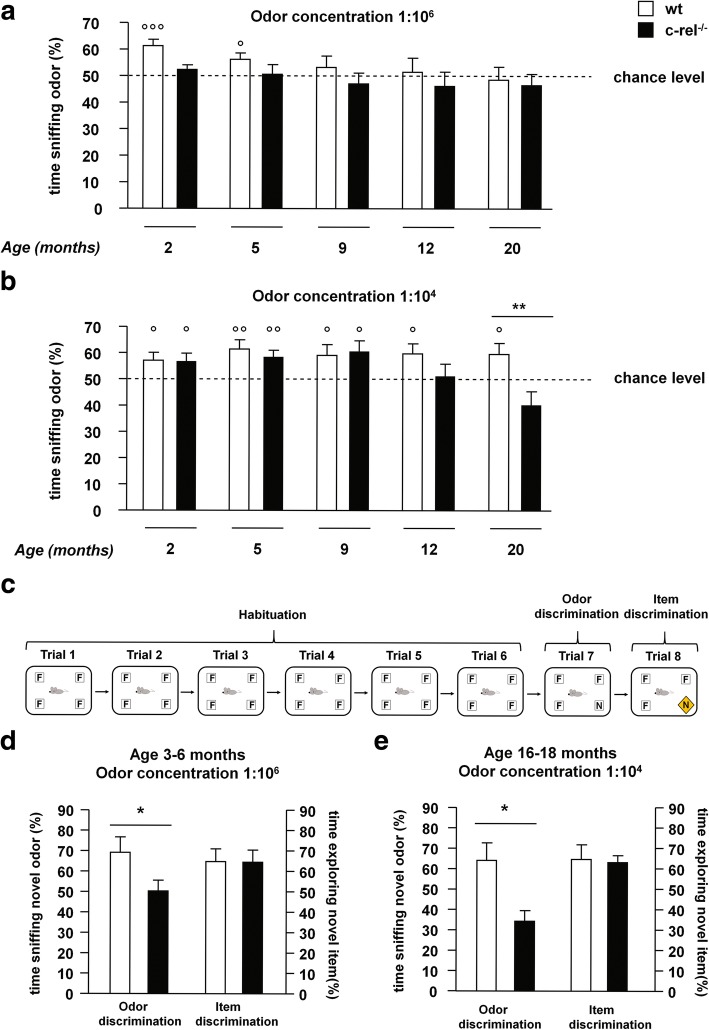Fig. 2.
Premotor olfactory dysfunctions in c-rel-/- mice. a, b Odor detection test was performed on 2-, 5-, 9-, 12- and 20-month-old wt and c-rel-/- mice (2 months: n = 15-18; 5 months: n = 18; 9 months: n = 10-15; 12 months: n = 16-18; 20 months: n = 13). The percentage of time sniffing the odor for the different scent dilutions is shown. a Odor concentration 1:106. Wild-type mice could locate the odor at 2 and 5 months when the percentage of time sniffing the odor was significantly different from the 50% chance level (°°°p<0.001 and °p<0.05 respectively, one-sample t-test), whereas c-rel-/- could not (p>0.05, one-sample t-test). Neither wt nor c-rel-/- mice could target the odor at 9, 12 and 20 months (p>0.05, one-sample t-test). b Odor concentration 1:104. Wild-type mice maintained their ability to target the odor through all the considered ages (°p<0.05; °°p<0.01, one-sample t-test). In contrast, c-rel-/- mice were able to locate the odor till the age of 9 months (°p<0.05; °°p<0.01, one-sample t-test) and were impaired at 12 and 20 months (p>0.05, one-sample t-test). Moreover, 20-month-old c-rel-/- mice displayed a significant odor detection deficit compared to age-matched wt (**p<0.01, two way ANOVA followed by Bonferroni post hoc test). c Odor and item discrimination test: the task consisted of six habituation trials (habituation) where mice were exposed to four cartridges containing a familiar odor (F, vanilla extract). In the seventh trial (odor discrimination), one cartridge is replaced with an identical one filled with a novel odor (N, orange extract). In the eighth trial (item discrimination), the usual cartridge containing the novel odor was replaced by a novel item (a different type of cartridge filled with the same orange scent). Trials were separated by 1 minute, each trial lasted 2 minutes. d, e Odor and item discrimination test was performed on wt and c-rel-/- mice of 3-6 months and 16-18 months of age using odors diluted at concentrations 1:106 and 1:104, respectively (3-6 months: n = 9-11; 16-18 months: n = 7-8). Percentage of time sniffing the novel odor during the odor discrimination trial and percentage of time exploring the novel item in the item discrimination trial are shown. Mice lacking c-Rel displayed an impaired odor discrimination compared with wt mice at both ages (*p<0.05, t-test). By contrast, both the mice groups spent a similar time exploring the novel item, indicating a proper cognitive performance of the animals in this test (p>0.05, t-test)

